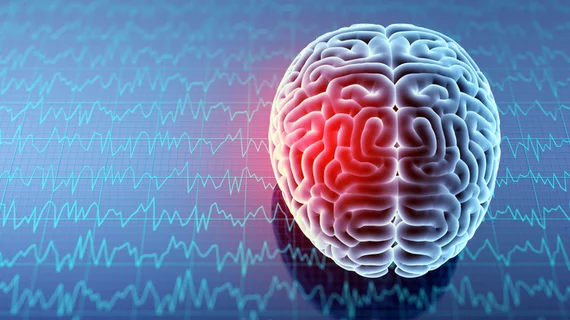Study calls for MRI follow-up in concussion patients
Follow-up MRI exams in patients who have sustained mild traumatic brain injuries could help predict if individuals will experience lingering symptoms months later.
Even in concussed patients who have normal CT scans, a follow-up MRI shortly after their initial recovery could be beneficial in allowing providers to manage complications prior to them becoming problematic, according to experts involved in new research published in Lancet-affiliated eClinicalMedicine.
“While traumatic lesion on X-ray computed tomography may predict poorer outcomes, less than 10% of patients who are scanned after mTBI have an abnormal CT, and high rates of incomplete recovery occur even in those with normal CT head scans," corresponding author Sophie Richter, with the Department of Medicine at University of Cambridge in the United Kingdom, and colleagues explained. "Our failure to identify such individuals with conventional imaging means those with persisting problems often fail to receive the ongoing care they need to maximize the chance of good outcomes.”
Diffusion tensor imaging (DTI) is particularly beneficial in patients with head injuries, as it offers a detailed view into the brain’s microstructure. The ability to detect alterations at a microstructural level could provide clues into why some patients continue to have persistent symptoms after a head injury.
To get a better idea of how DTI MRI scans could provide additional insight into whether patients will struggle during recovery, researchers analyzed data from a group of more than 1,000 patients who had normal CT results after sustaining an mTBI. Of those, 153 also had an MRI within 30 days of their injury.
The group compared all imaging, records of recovery and serum biomarkers to determine if specific findings were associated with incomplete recovery, which was the case for 38% of the patients.
Serum biomarkers did not provide any additional insight beyond standard prognostic models. However, adding DTI metrics significantly improved the predictive value of the models.
Specifically, the left posterior thalamic radiation, left superior cerebellar peduncle and right uncinate fasciculus were the most valuable prognostic tracts, the group noted.
“While both left and right sided structures, as well as commissural tracts were represented in this list, it was noteworthy that left sided structures were, in general, ranked more highly on this list. The predominance of left-sided tracts relevant to functional outcome after mTBI observed in our study has also been reported by Palacios et al,” the group noted of the finding. “We concur with their speculation regarding the importance of the left hemisphere for language processing and right-hand actions.”
Though the authors acknowledged that their findings need to be validated externally, they suggested that, once this happens, DTI "could allow for targeted follow-up and enrichment of clinical trials of early interventions to improve outcome.”
The study abstract is available here.

